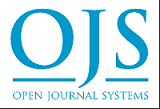Evaluation of the capacity of community health centers to achieve high-performance: A descriptive analysis of health survey data
DOI:
https://doi.org/10.33024/minh.v7i2.113Keywords:
Community Health Centers, Performance Achievement, Performance Evaluation, Public Health ServicesAbstract
Background: The background of this research arises from the need to understand the overall performance of Community Health Centers (CHCs) in East Lombok Regency. CHCs play a crucial role in providing public health services, and the evaluation of their performance is essential to ensure the effectiveness of these services. Through descriptive analysis of health survey data, valuable insights are expected to contribute to the development of health policies and the improvement of health services in East Lombok Regency.
Purpose: To provide a comprehensive overview of the extent to which the performance goals of CHCs in the East Lombok region have been achieved.
Method: This research employs a descriptive analysis approach by collecting data through a health survey involving respondents from various layers of the community in East Lombok Regency. Carefully crafted survey instruments are used to gather information related to CHCs performance, covering aspects such as accessibility, service quality, and public satisfaction. Data collection is conducted meticulously and structured to ensure the validity and reliability of the results. Descriptive statistical data analysis is employed to intricately describe the conditions of CHCs performance. This research method is expected to provide a comprehensive understanding of the factors influencing CHCs performance in East Lombok Regency.
Results: There are several aspects that still need attention and improvement. In public health efforts, especially in health promotion, there are some indicators that are lacking, such as the number of types of printed health promotion media and the coverage of policies supporting the healthy living community movement. Maternal and child health also show satisfactory achievement levels, but there are still some variables that require further attention, such as the coverage of delivery services for mothers in health facilities and the coverage of services for toddlers. Additionally, in the development of community oral health efforts, there are some aspects that are assessed as less satisfactory, such as the implementation of community-based oral health efforts in integrated health service posts and traditional health practices that have not reached the desired targets. Therefore, to improve the performance of Masbagik CHC, a thorough evaluation of these less satisfactory aspects is needed, along with the design of appropriate improvement strategies to achieve more optimal results.
Conclusion: Essential public health efforts, especially in health promotion, show less than optimal achievements. Meanwhile, environmental health and family health efforts demonstrate good achievements. Specific health services, such as vaccination, infectious disease control, and early detection of diseases, show good to excellent achievements. However, certain aspects of traditional health practices, sports, and occupational health show satisfactory achievements and require more attention. The implication is to enhance efforts in health promotion, strengthen traditional health efforts, and improve achievements in hajj health, sports, and occupational health to achieve a more holistic public health.
Downloads
Published
How to Cite
Issue
Section
License
Copyright (c) 2024 Malahayati International Journal of Nursing and Health Science

This work is licensed under a Creative Commons Attribution-ShareAlike 4.0 International License.









